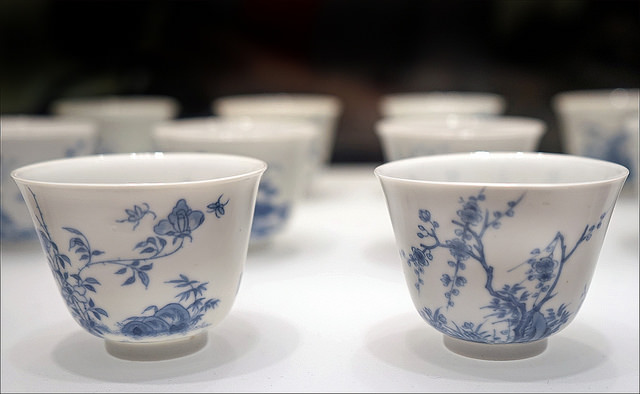Difference Between Ceramic and Porcelain
Table of Contents
Key Difference – Ceramic vs Porcelain
Many people think Ceramic and Porcelain are the same material and the two words can be used interchangeably; however, there is a difference between these materials based on their properties and usages. The key difference between ceramic and porcelain can be explained as below. Porcelain is a type of ceramic material, but its process steps include heating of ceramics to a high temperature to obtain the desired material properties. Porcelain products are relatively expensive than ceramic products.
What is Porcelain?
Porcelain is a ceramic material; however, porcelains are made by heating ceramic products at a very high temperature (12000C to 14000C). Therefore, porcelain possesses vitreous or glassy properties such as translucence (permitting light to pass through but diffusing it so that objects on the opposite side are not clearly visible) and low porosity.
The composition of porcelain materials varies according to the usage. Kaolin is the main raw material in porcelain; in addition, clay minerals are present in smaller quantities to improve the plasticity. The other raw materials are feldspar, ball clay, glass, bone ash, steatite, quartz, petuntse, and alabaster.

What is Ceramic?
Ceramic has now become one of the essential materials in our daily work; ceramic materials include things such as tiles, bricks, plates, glass, and toilets. Ceramic can also be found in watches, snow skies, automobiles, phone lines, space shuttles, airplanes and appliances such as enamel coatings. It is an inorganic, non-metallic material with a lot of varieties. For example, depending on the production method, ceramics can be a dense material or a lightweight material. In general, ceramic is a hard material, but it is brittle. Ceramics has some amazing properties such as electrical conductivity which allows passing electricity through the material. In contrast, it can sever an insulator, which does not flow electricity through the material. In addition, some ceramics can display superconductive properties and magnetic properties.

Ceramic tile work
What is the difference between Ceramic and Porcelain?
Manufacturing Process of Ceramic and Porcelain
Porcelain: Porcelain manufacturing process consists of six main steps. It starts with crushing and grinding of raw materials to the desired size using a variety of equipment. Then, over-sized materials are removed by screening or sieving. After that, water is added to get the desired consistency. Next, the body of the porcelain is formed; this process varies depending on the type of the material. The formed material is then fired at a relatively low temperature, to vaporize volatile contaminants and to minimize shrinkage during firing. This is called bisque firing. The last two processes are glazing and firing.
Ceramic: The raw materials of ceramic are clay, earthen elements, powders, and water. All those ingredients are mixed well and shaped into desired forms. Shaped materials are fired at a high temperature in a kiln. Usually, ceramic materials are covered in decorative, waterproof materials known as glazes.
Uses of Ceramic and Porcelain
Porcelain: Porcelain materials are used to make insulating materials, building materials, bathroom fittings and in loudspeaker casings.
Ceramic: Porcelain materials are used to make structural materials such are bricks, pipes, and floor and wall tiles. In addition, it is also used in kiln linings, gas fire radiants, cookware, pottery, tableware and in engineering materials.
Properties of Ceramic and Porcelain
Porcelain: Porcelain materials are durable, resistant to rust and impermeable.
Ceramic: Material properties are dictated by atomic scale structure; types of atoms present, the types of bonding between the atoms, and the way the atoms are packed together. The most common bonding type in ceramic materials is ionic and covalent bonds. Usually, Ceramic materials possess a wide range of properties, but some of the general properties are listed below.
- Hard
- Wear-resistant
- Brittle
- Refractory
- Thermal insulators
- Electrical insulators
- Nonmagnetic
- Oxidation resistant
- Prone to thermal shock
- Chemically stable
ncG1vNJzZmivp6x7pbXFn5yrnZ6YsqOx07CcnqZemLyue8OinZ%2Bdopq7pLGMm5ytr5Wau26vxKuYpqGTYq6vsIyvqmaon6ewprjAoqVo